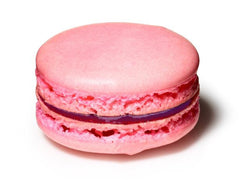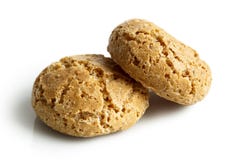Have you ever wondered where macaroons come from?
You've seen shaggy looking, super delicious coconut macaroons (chocolate coconut macaroons, in this case) like this:

And you've seen the pastel colored French macarons like this:

And probably even Italian macaroons like this:

And you've probably wondered something along the lines of "where do macaroons come from," or "why are all these cookies called macaroons when they don't look anything alike?!"
Let us help.
The Ancient History of Macaroons
The story goes back more than 1000 years to the Arab empire of the 600-700s. When the empire expanded up through Northern Africa into what's now Sicily, the Arabs, as you'd expect, brought their foods with them.
One of the foods they brought with them was a sweet "cookie" made from honey and a ground up nut flour - probably pistachio, but possibly also almond or other nuts.
The Sicilians called this food "maccheroni" as it was made up of a ground nut and maccheroni referred to any food, savory or sweet, made from something ground up - nut, wheat, whatever.
Over time, the sweet maccheroni evolved to incorporate egg whites for leavening and utilized the bitter almonds known so well throughout the Italian peninsula.
This cookie, made from ground almonds, sweetened with sugar, and leavened with egg whites, is more or less what we still know today as the Italian macaroon (the Italians know it as "amaretti" as maccheroni no longer refers to quite as broad an array of foods as it once did).
Exporting Macaroons to France
In the 1500s, Catherine de Medici, from one of the most prominent Italian families, married into French royalty and moved to France. Like the Arabs almost 800 years before her, she, too, brought her favorite cookies with her.
It was here that she introduced the sweet Italian "maccheroni" to the French. Upon their adoption into French cuisine, the Italian maccheroni were directly translated into French as "macarons."
It wasn't until the early 1900s when Pierre Desfontaines, the grandson of a fellow named Lauduree who owned a bakery bearing his name, sandwiched the two macarons around a chocolate ganache filling. Pierre introduced this sandwich to his grandfather's bakery and more or less from then on, the French macaron formally diverged from its Italian origin as this form became what's now commonly known as a macaron.
And Then Coconut
It's not a stretch to imagine swapping out almond flour for ground up coconut. As coconut grew in popularity from its introduction to Europe by Vasco de Gama in the 1500s to the international food boom in post WWI and WWII United States, chefs and bakers sought out new ways to use new ingredients. The swap of almond flour for shredded coconut was, as far as we're concerned, a stroke of brilliance that stuck with the market.
The form is quite different from the original Italian macaroon or amaretto, and certainly different still from the French macaron's sandwich, but this is largely due to the size of the "flour" - those macaroons use a very finely ground nut flour whereas coconut macaroons utilize a much coarser "flour." Otherwise, they're the same!
We've taken the coconut macaroon's humble origin and tried to spice them up a bit. We hope you enjoy what you find here.
